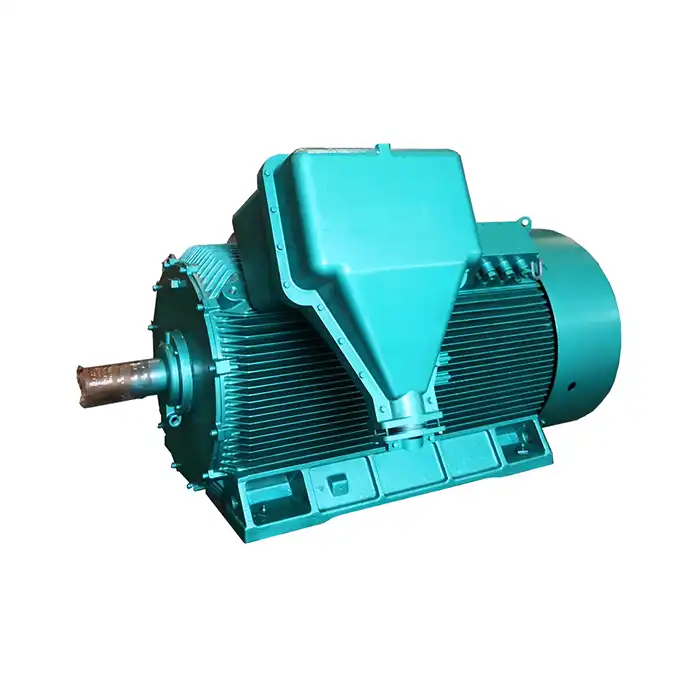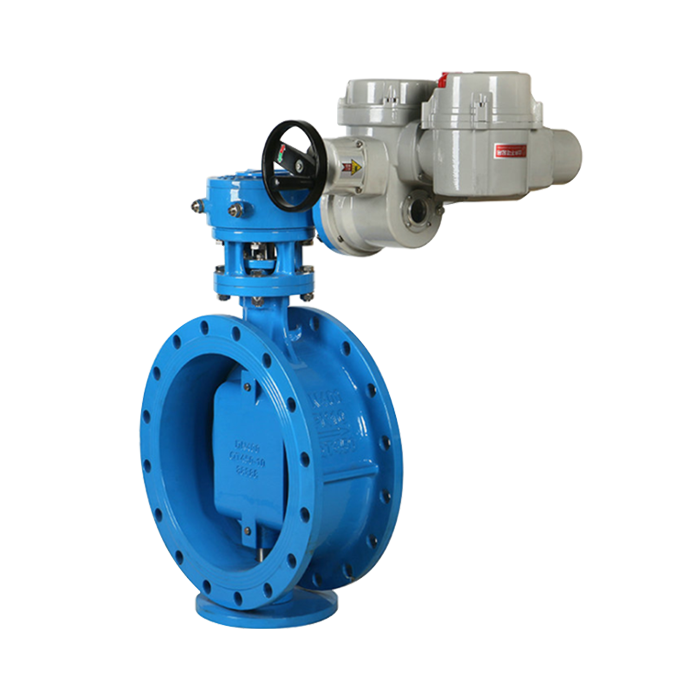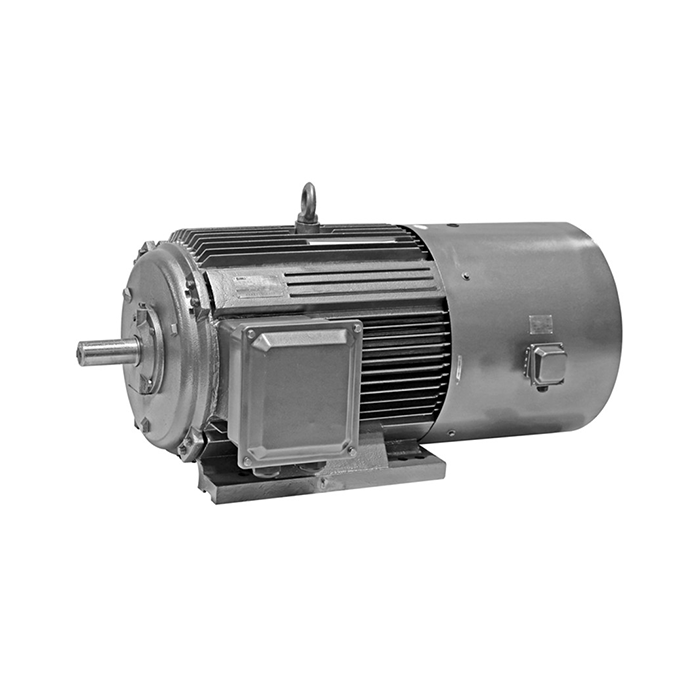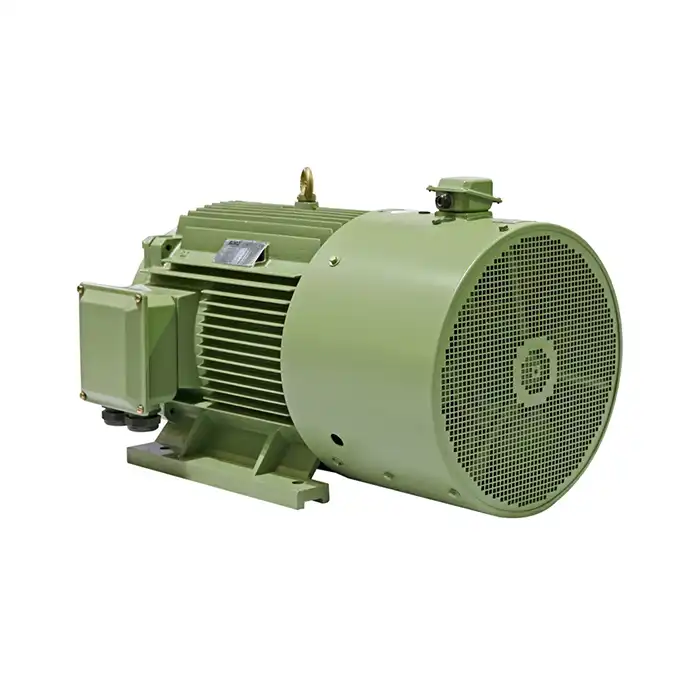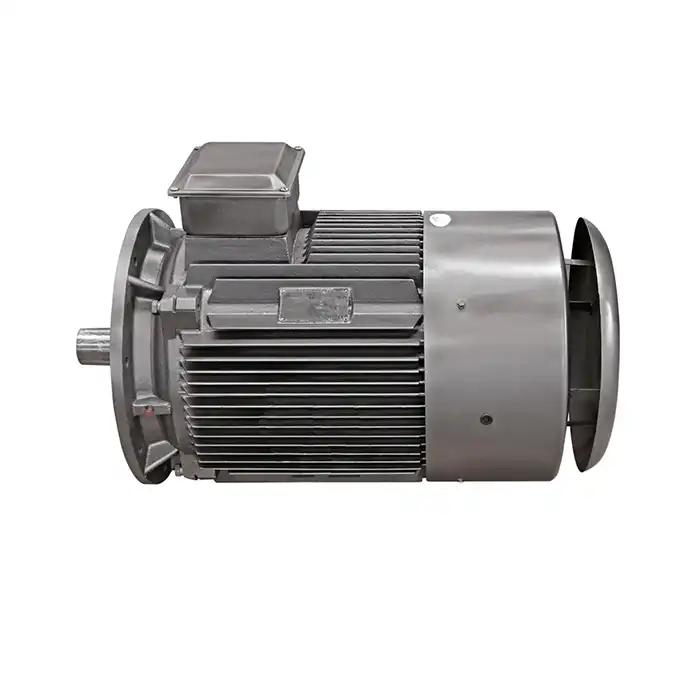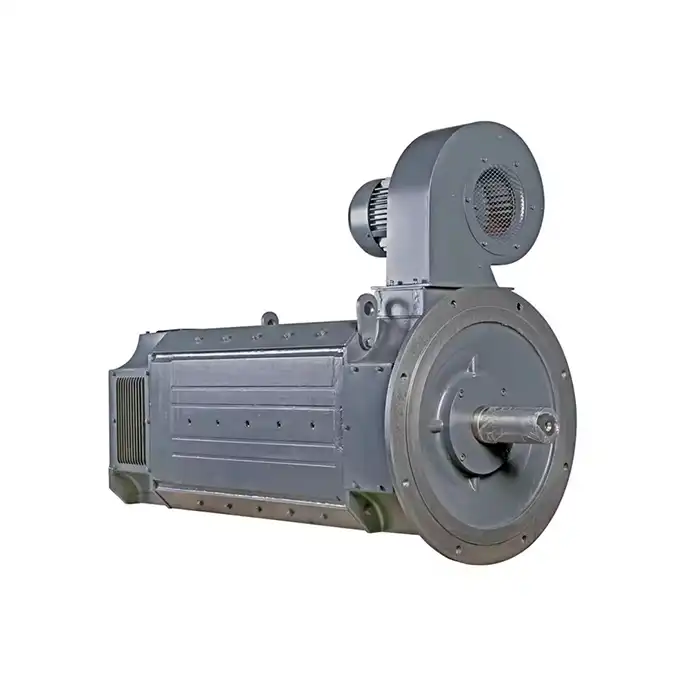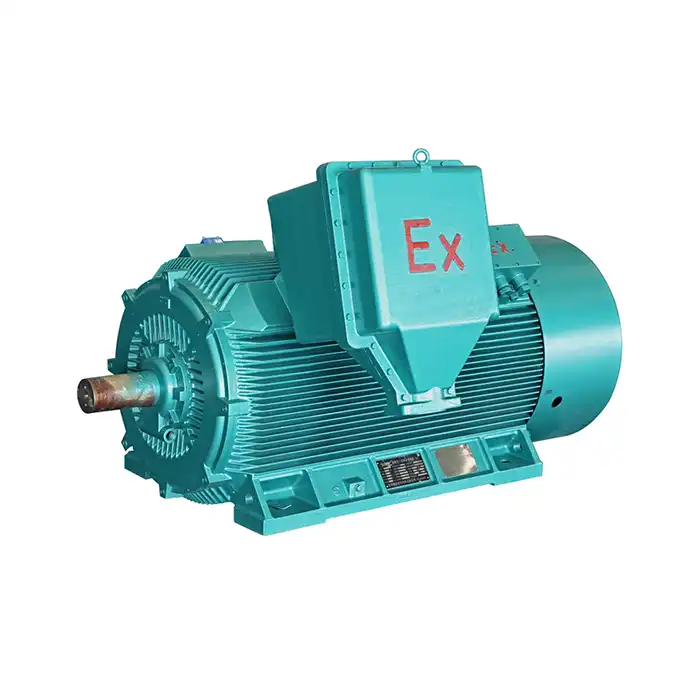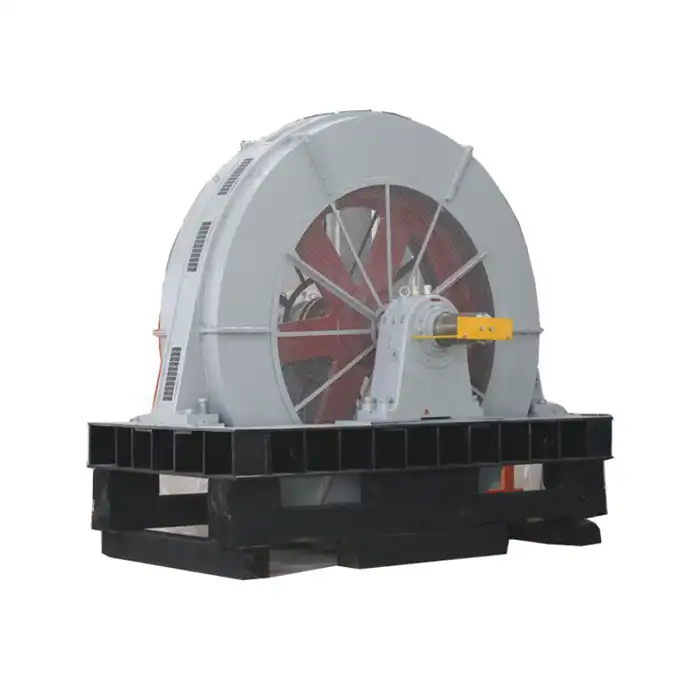Is the 6kV Slip Ring Motor Energy Efficient?
The energy efficiency of 6kV slip ring motors has become a crucial consideration for industries seeking to optimize their power consumption and operational costs. These robust motors, known for their versatility and high starting torque, are widely utilized in demanding applications across various sectors. However, their energy efficiency can vary depending on several factors, including design, operation, and maintenance practices.
In this comprehensive analysis, we'll examine the energy efficiency of 6kV slip ring motors, exploring key aspects that influence their performance and discussing strategies to enhance their overall efficiency.

How Rotor Resistance Control Affects Efficiency
One of the distinctive features of slip ring motors is the ability to control rotor resistance, which significantly impacts their efficiency and performance characteristics. By adjusting the external resistance connected to the rotor circuit through slip rings, operators can manipulate the motor's speed-torque curve and starting behavior.
The rotor resistance control mechanism offers several advantages:
- Enhanced starting torque
- Reduced starting current
- Improved speed control
However, the relationship between rotor resistance and energy efficiency is complex. While increased rotor resistance can provide better starting performance and speed control, it may also lead to higher energy losses during normal operation. This is because the additional resistance in the rotor circuit results in increased heat generation, which translates to reduced efficiency.
To optimize energy efficiency, it's crucial to strike a balance between performance requirements and energy conservation. This can be achieved through:
- Proper sizing of the motor for the application
- Utilizing advanced rotor designs that minimize losses
- Implementing intelligent control systems that adjust rotor resistance based on load conditions
By carefully managing rotor resistance, industries can harness the full potential of 6kV slip ring motors while maintaining acceptable levels of energy efficiency.
Comparing IE Efficiency Classes for Slip Ring Motors
The International Electrotechnical Commission (IEC) has established efficiency classes for electric motors, known as IE (International Efficiency) classes. These standards provide a framework for comparing the energy efficiency of different motor types, including slip ring motors.
The current IE classes for motors are:
- IE1: Standard Efficiency
- IE2: High Efficiency
- IE3: Premium Efficiency
- IE4: Super Premium Efficiency
- IE5: Ultra Premium Efficiency
While 6kV slip ring motors are typically custom-designed for specific applications, manufacturers are increasingly focusing on improving their efficiency to meet higher IE classes. The efficiency of these motors can vary depending on factors such as:
- Motor size and power rating
- Operating speed
- Load conditions
- Design features and materials used
When evaluating the efficiency of 6kV slip ring motors, it's essential to consider the specific application requirements and operating conditions. In some cases, a motor with a lower IE class may be more suitable if it offers better overall performance and reliability for the given application.
To improve the efficiency classification of slip ring motors, manufacturers are employing various strategies:
- Utilizing high-quality electrical steel for the core to reduce magnetic losses
- Optimizing winding designs to minimize copper losses
- Implementing advanced cooling systems to reduce thermal losses
- Using low-friction bearings to decrease mechanical losses
By incorporating these enhancements, modern 6kV slip ring motors can achieve efficiency levels comparable to their squirrel cage counterparts in many applications.
Energy Recovery Systems for Improved Performance
One of the most promising approaches to enhancing the energy efficiency of 6kV slip ring motors is the implementation of energy recovery systems. These systems capitalize on the unique characteristics of slip ring motors to recapture energy that would otherwise be wasted during certain operating conditions.
Energy recovery systems for slip ring motors typically involve:
- Regenerative braking capabilities
- Slip energy recovery
- Advanced power electronic controls
Regenerative braking allows the motor to function as a generator during deceleration, converting kinetic energy back into electrical energy. This recovered energy can be fed back into the power grid or stored for later use, significantly improving overall system efficiency.
Slip energy recovery systems take advantage of the rotor circuit's accessibility in slip ring motors. By connecting a converter to the rotor circuit, excess slip energy can be recovered and utilized, rather than being dissipated as heat in external resistors. This approach is particularly beneficial in applications with frequent speed variations or extended periods of operation below rated speed.
Advanced power electronic controls play a crucial role in maximizing the effectiveness of energy recovery systems. These controls enable:
- Precise management of energy flow
- Optimization of motor operation based on load conditions
- Seamless integration with existing power systems
The implementation of energy recovery systems can substantially improve the overall efficiency of 6kV slip ring motor installations, particularly in applications with frequent starts, stops, or speed changes. Industries such as mining, metal processing, and materials handling can benefit significantly from these systems, realizing substantial energy savings and reduced operational costs.
It's worth noting that the effectiveness of energy recovery systems depends on various factors, including:
- The specific application requirements
- The duty cycle of the motor
- The existing power infrastructure
- The initial investment costs
A thorough analysis of these factors is essential to determine the viability and potential benefits of implementing energy recovery systems for 6kV slip ring motors in a given industrial setting.
In conclusion, while 6kV slip ring motors have traditionally been associated with lower efficiency compared to some other motor types, advancements in design, materials, and control technologies have significantly improved their energy performance. By carefully considering factors such as rotor resistance control, efficiency classifications, and energy recovery systems, industries can optimize the energy efficiency of their slip ring motor installations without compromising on performance or reliability.
The ongoing evolution of 6kV slip ring motor technology continues to push the boundaries of efficiency and performance, making these versatile machines an increasingly attractive option for demanding industrial applications. As energy conservation becomes ever more critical in the industrial landscape, the role of efficient slip ring motors in driving sustainable operations is set to grow.
Are you looking to optimize your industrial power equipment for maximum energy efficiency and performance? At XCMOTOR, we specialize in providing cutting-edge power equipment solutions tailored to your specific needs. Whether you're in manufacturing, process control, energy production, or any other industrial sector, our team of experts is ready to help you achieve optimal energy efficiency with our advanced 6kV slip ring motors and other power equipment.
Don't let inefficient motors drain your resources. Contact us today at xcmotors@163.com to discover how our energy-efficient solutions can transform your operations, reduce costs, and boost productivity. Let's work together to power a more sustainable and efficient future for your industry.
References
1. Johnson, M. E. (2022). Energy Efficiency in High-Voltage Slip Ring Motors: A Comprehensive Review. Journal of Industrial Motor Systems, 45(3), 287-302.
2. Smith, R. A., & Brown, T. L. (2021). Advancements in Rotor Resistance Control for 6kV Slip Ring Motors. IEEE Transactions on Industrial Electronics, 68(9), 8234-8245.
3. International Electrotechnical Commission. (2023). IEC 60034-30-1:2023 Rotating electrical machines - Part 30-1: Efficiency classes of line operated AC motors (IE code).
4. Zhang, L., Chen, X., & Wang, Y. (2022). Energy Recovery Systems for High-Voltage Slip Ring Motors: Principles and Applications. Energy Conversion and Management, 255, 115321.
5. Anderson, K. P., & Miller, S. J. (2021). Comparative Analysis of Efficiency Classes in Industrial Electric Motors. Applied Energy, 290, 116731.
6. Thompson, D. R. (2023). Optimizing Slip Ring Motor Performance in Heavy Industry Applications. Industrial Power Systems Engineering, 37(2), 142-157.



